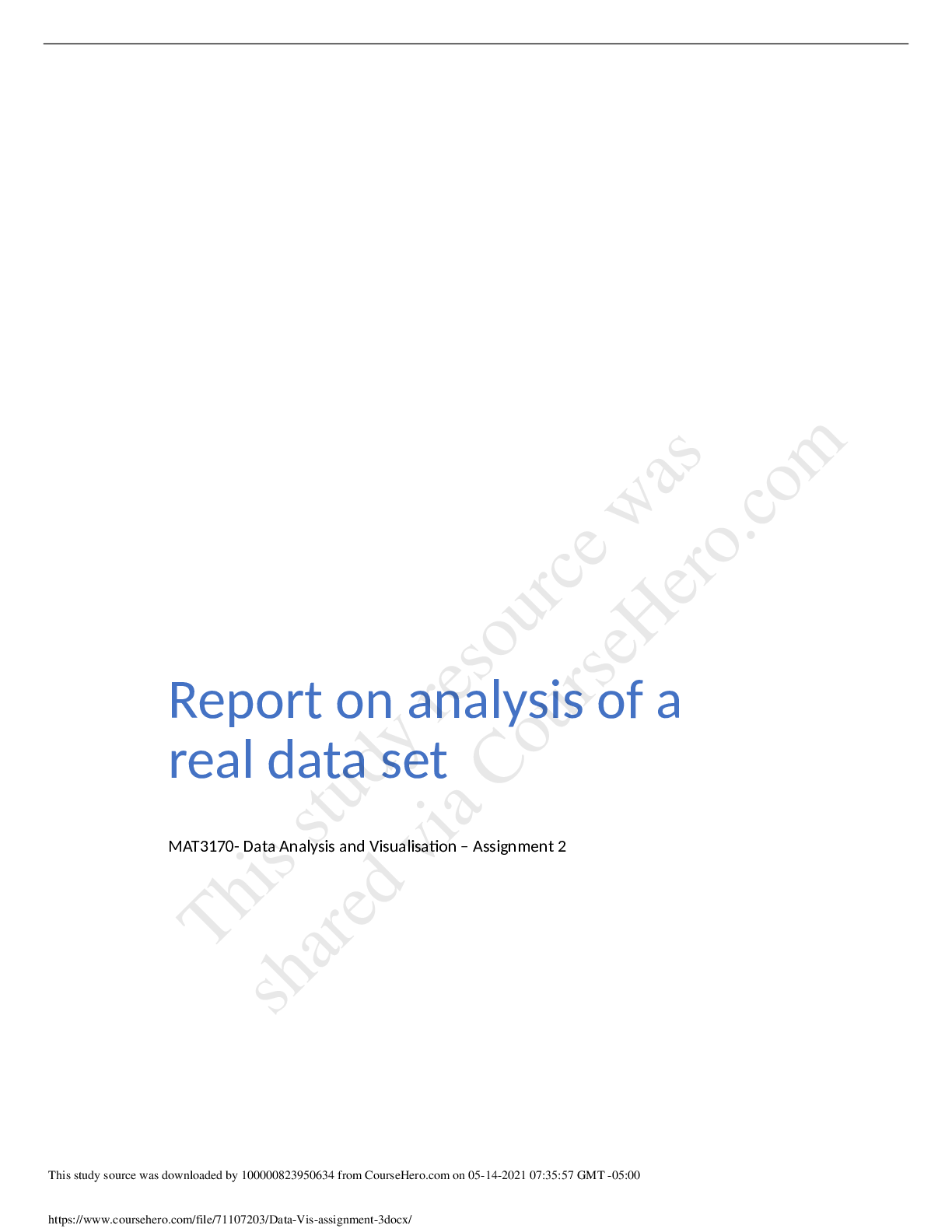*NURSING > STUDY GUIDE > Rasmussen College NUR 1648 Nursing III Final study guide_summer 18-REVIEWED AND VERIFIED BY EXPERTS (All)
Rasmussen College NUR 1648 Nursing III Final study guide_summer 18-REVIEWED AND VERIFIED BY EXPERTS 2021-GRADED A+
Document Content and Description Below
Summer 18 Nursing III Final study guide Cancer: Chapters 21 and 22 Thrombocytopenia deficiency of platelets in the blood. This causes bleeding into the tissues, bruising, and slow blood clottin... g after injury. /neutropenia the presence of abnormally few neutrophils in the blood, leading to increased susceptibility to infection. It is an undesirable side effect of some cancer treatments. /anemia a condition marked by a deficiency of red blood cells or of hemoglobin in the blood, resulting in pallor and weariness. Primary/secondary prevention/ Primary Prevention Avoidance of known or potential carcinogens is an effective prevention strategy when a cause of cancer is known and avoidance is easily accomplished. For example, teach adults to use skin protection during sun exposure to avoid skin cancer. Most lung cancer can be avoided by not using tobacco and eliminating exposure to loose asbestos particles. Teach all adults about the dangers of cigarette smoking and other forms of tobacco use (see the Health Promotion and Maintenance feature in Chapter 27). Teach adults who are exposed to carcinogens in the workplace to use personal protective equipment that reduces direct contact with this substance. As more cancer causes are identified, avoidance may become even more effective. Modifying associated factors appears to help reduce cancer risk. Absolute causes are not known for many cancers, but some conditions appear to increase risk. Examples are the increased incidence of cancer among adults who consume alcohol; the association of a diet high in fat and low in fiber with colon cancer, breast cancer, and ovarian cancer; and a greater incidence of cervical cancer among women who have multiple sexual partners (ACS, 2017). Modifying behavior to reduce the associated factor may decrease the risk for cancer development. Therefore teach all adults to limit their intake of alcohol to no more than one ounce per day and to include more fruits, vegetables, and whole grains in their diets. Instruct women about the importance of limiting the number of sexual partners and to use safer sex practices to avoid exposure to viruses that can increase the risk for cervical cancer (see Table 21-6 for a listing of cancer-causing viruses). Removal of “at-risk” tissues reduces cancer risk for an adult who has a known high risk for developing a specific type of cancer. Examples include removing moles to prevent conversion to skin cancer, removing colon polyps to prevent colon cancer, and removing breasts to prevent breast cancer. Not all “at-risk” tissues can be removed (e.g., those that are part of essential organs). Chemoprevention is a strategy that uses drugs, chemicals, natural nutrients, or other substances to disrupt one or more steps important to cancer development. These agents may be able to reverse existing gene damage or halt the progression of the transformation process. Only a few agents have been found effective for chemoprevention. These include the use of aspirin and celecoxib (Celebrex) to reduce the risk for colon cancer, the use of vitamin D and tamoxifen to reduce the risk for breast cancer, and the use of lycopene to reduce the risk for prostate cancer (ACS, 2017). Vaccination is a newer method of primary cancer prevention. Currently the only vaccines approved for prevention of cancer are related to prevention of infection from several forms of the human papilloma virus (HPV). These vaccines are Gardasil and Cervarix. As more cancercausing viruses are identified, it is hoped that vaccines will be developed to prevent those viral infections. Secondary Prevention Regular screening for cancer does not reduce cancer incidence but can greatly reduce some types of cancer deaths. Teach all adults the benefits of participating in specific routine screening techniques annually as part of health maintenance. General screening recommendations are listed in chapters discussing cancers by organ system. The age and type of participation in specific screening tests are different for adults who have an identified increased risk for a specific cancer type. In addition, there is some controversy about when the age and frequency for screening has the greatest benefit. Examples of recommended screenings include (ACS, 2017): • The choice of annual mammography for women 40 to 44 years of age, annual mammography for women 45 to 54 years of age, and annual or biennial mammography for women over 55 years of age • Annual clinical breast examination for women older than 40 years; every 3 years for women age 20 to 39 years. • Colonoscopy at age 50 years and then every 10 years • Annual fecal occult blood for adults of all ages • Digital rectal examination (DRE) for men older than 50 years Because cancer development clearly involves gene changes (either inherited gene mutations or acquired damage-induced gene mutations), adults can be screened for some gene mutations that increase the risk for cancer. A few examples of known gene mutations that increase cancer risk are found in the BRCA1 gene, the BRCA2 gene, and the CHEK2 gene (which increase the risk for breast cancer) and mutations in the APC, MLH1, and MSH2 genes (which increase the risk for colon cancer). When a patient has a strong family history of either breast or colon cancer, create a three-generation pedigree to more fully explore the possibility of genetic risk. If a pattern of risk emerges, inform the person about the possible benefits of genetic screening and advise him or her to talk with an oncology health practitioner or genetics professional for more information. Genetic screening can help an adult at increased genetic risk for cancer to alter lifestyle factors, participate in early detection methods, initiate chemoprevention, or even have atrisk tissue removed. Genetic screening has some personal risks, as well as potential benefits (see Chapter 5). education Patient and Family Education: Preparing for SelfManag [Show More]
Last updated: 1 year ago
Preview 1 out of 28 pages
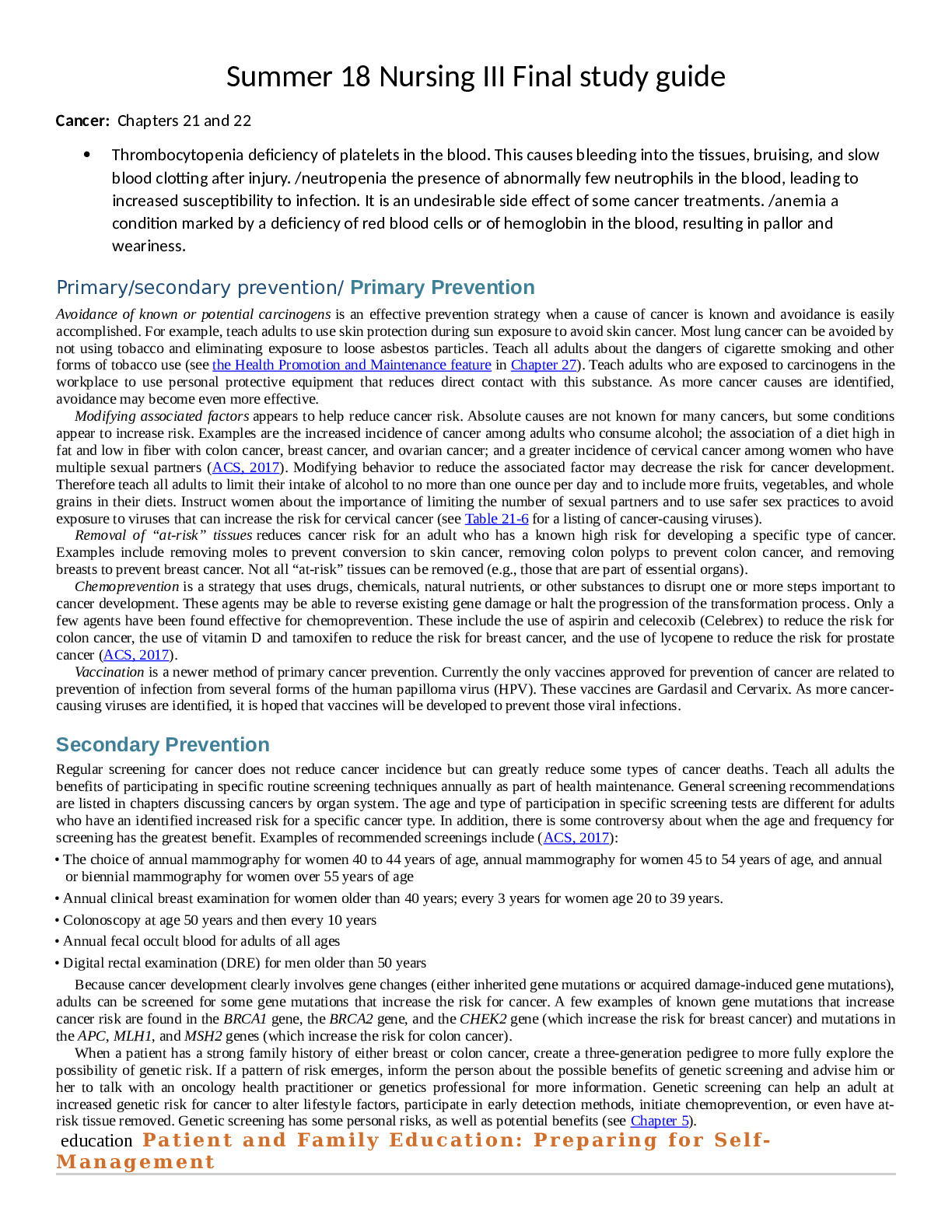
Reviews( 0 )
Document information
Connected school, study & course
About the document
Uploaded On
May 17, 2021
Number of pages
28
Written in
Additional information
This document has been written for:
Uploaded
May 17, 2021
Downloads
0
Views
53







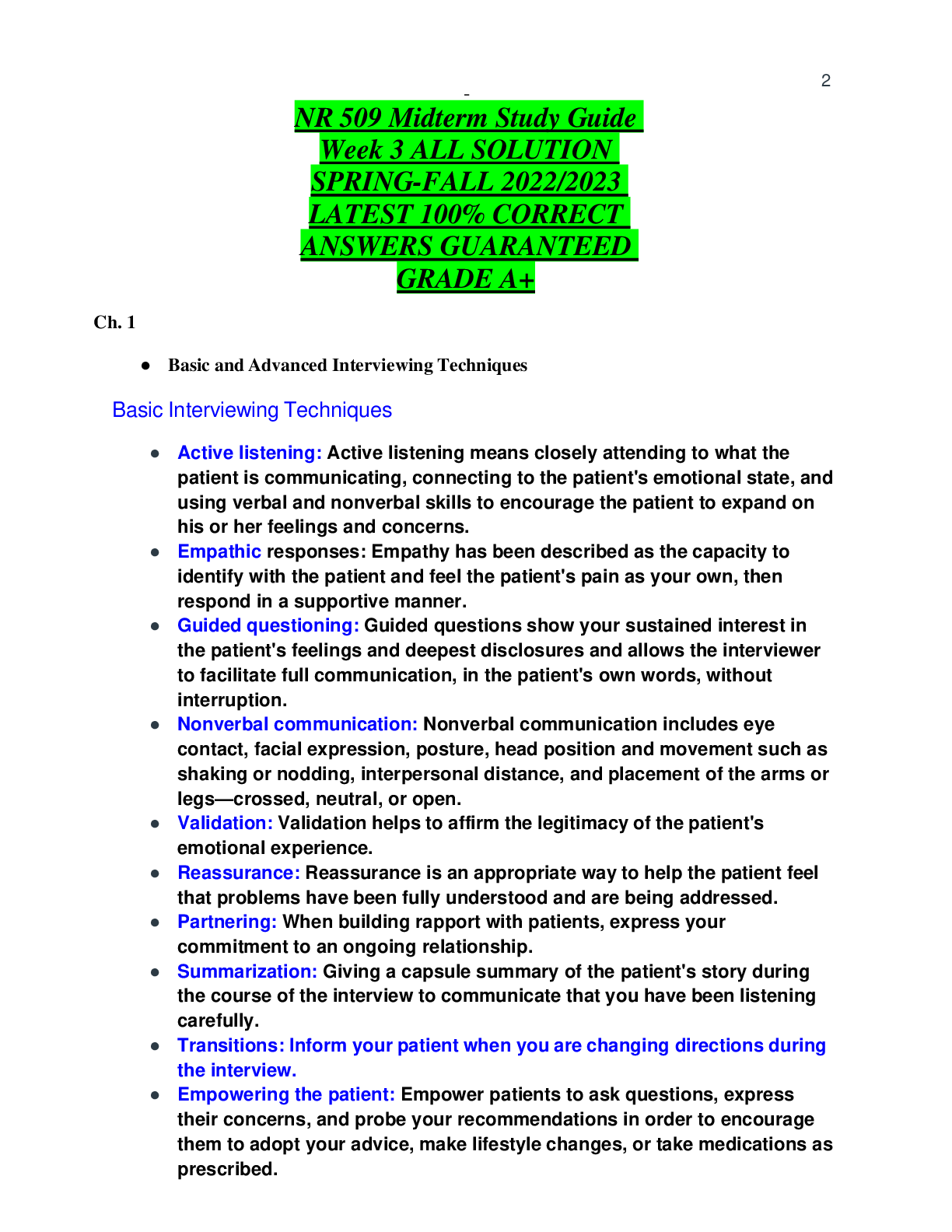
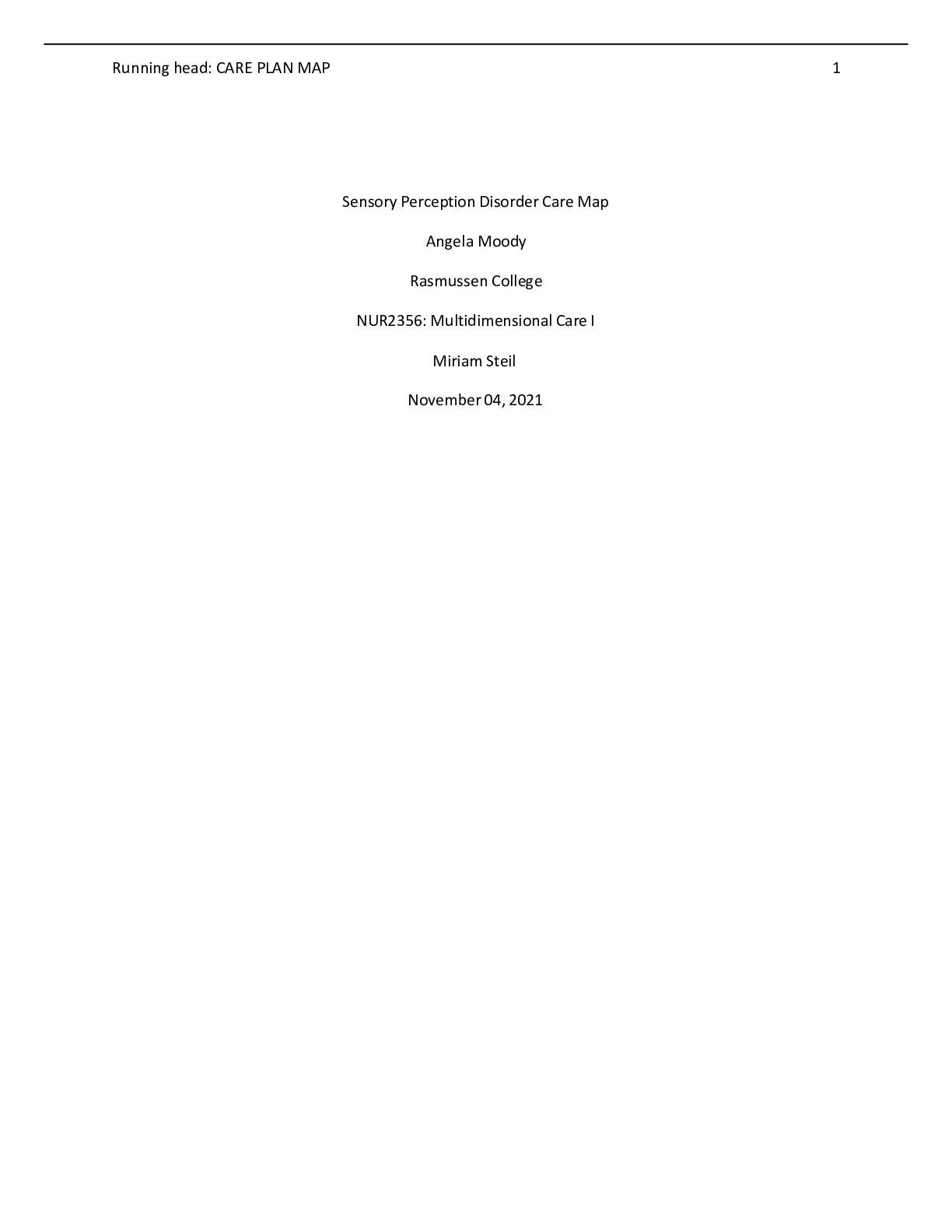
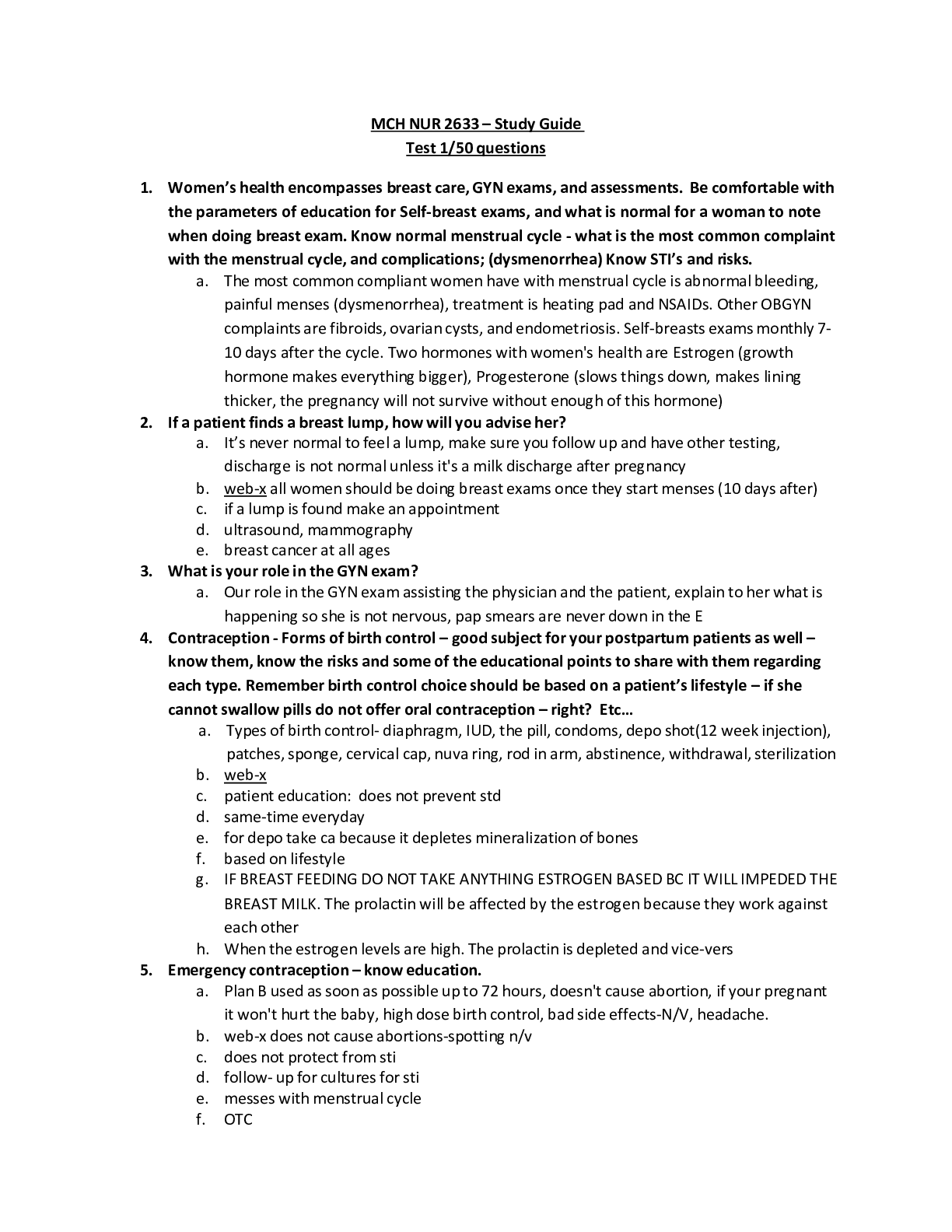
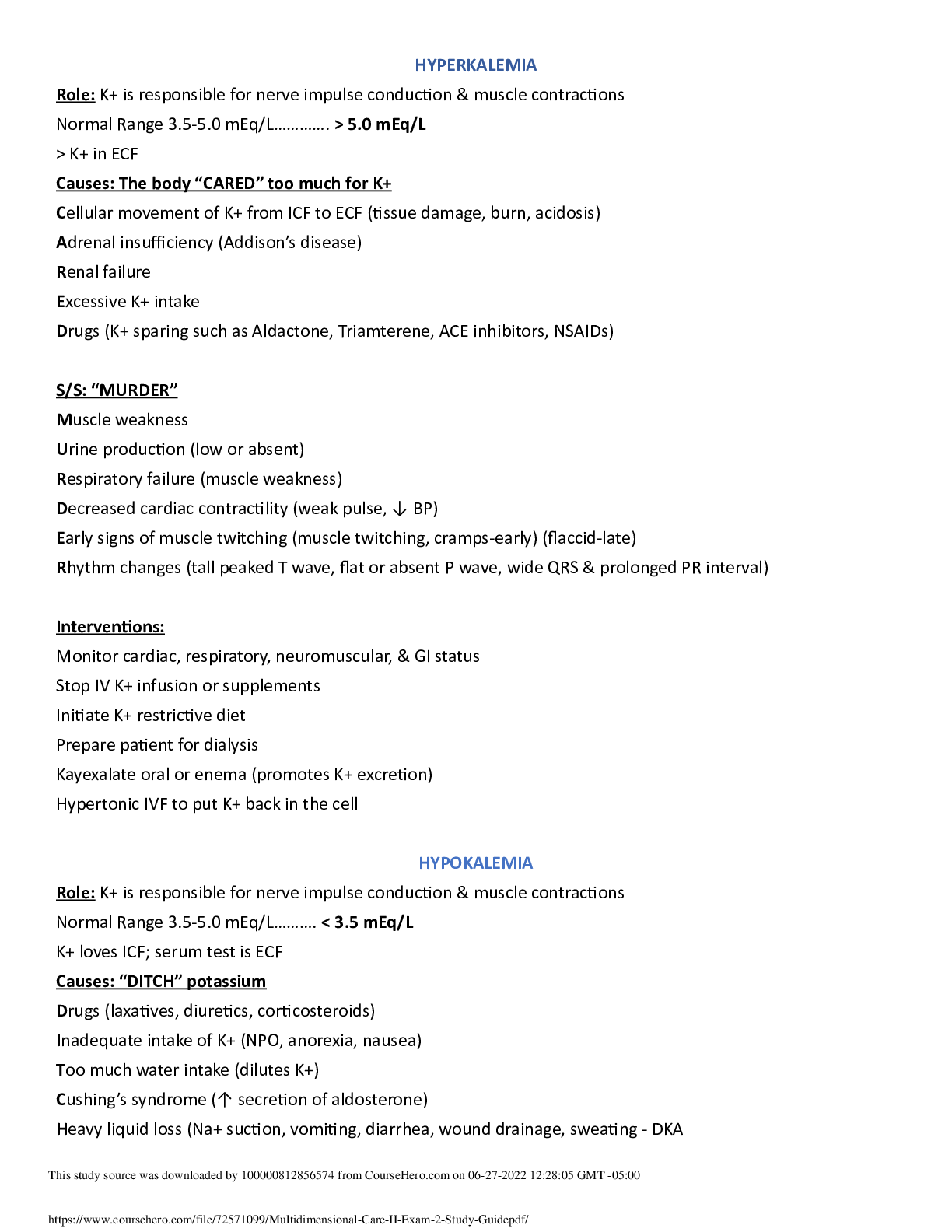
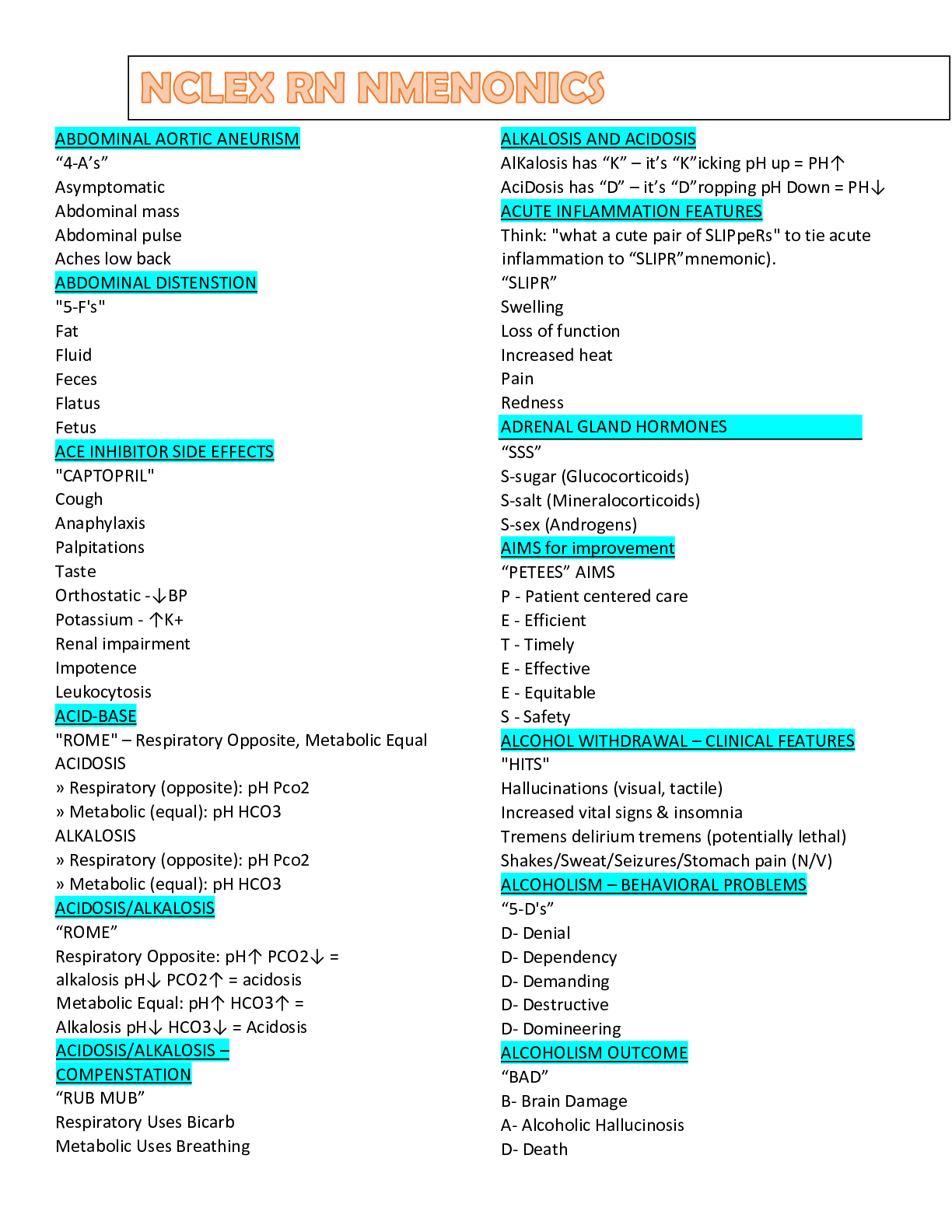
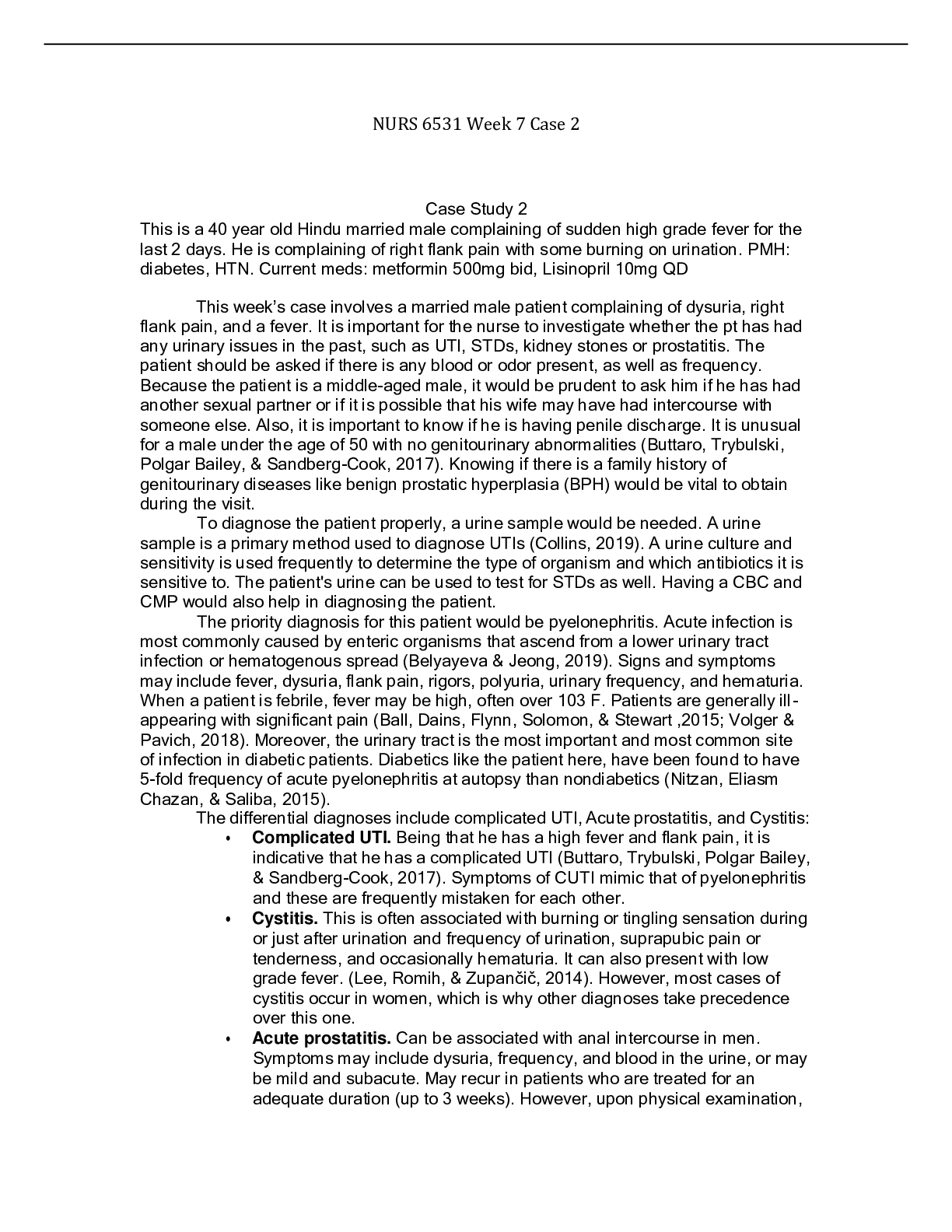

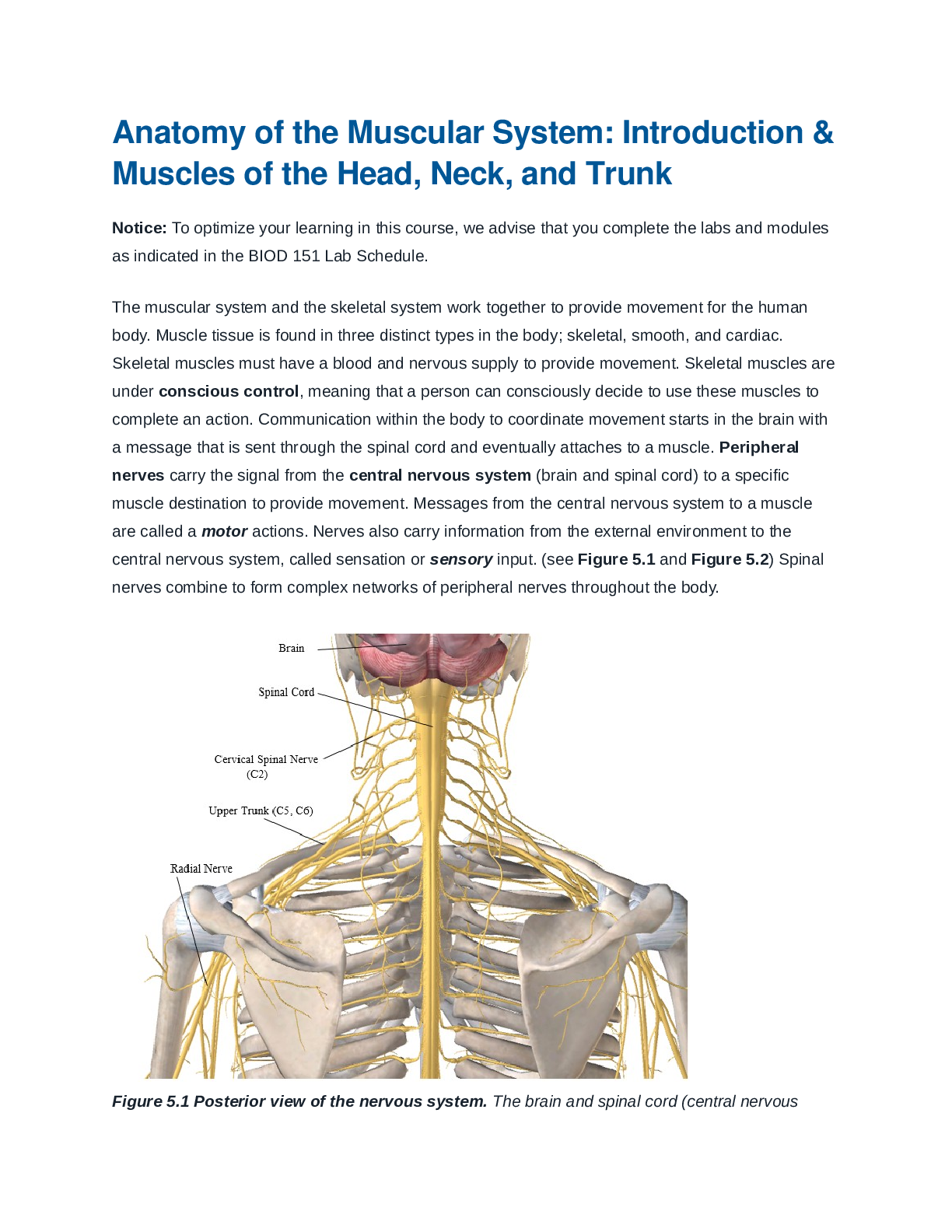

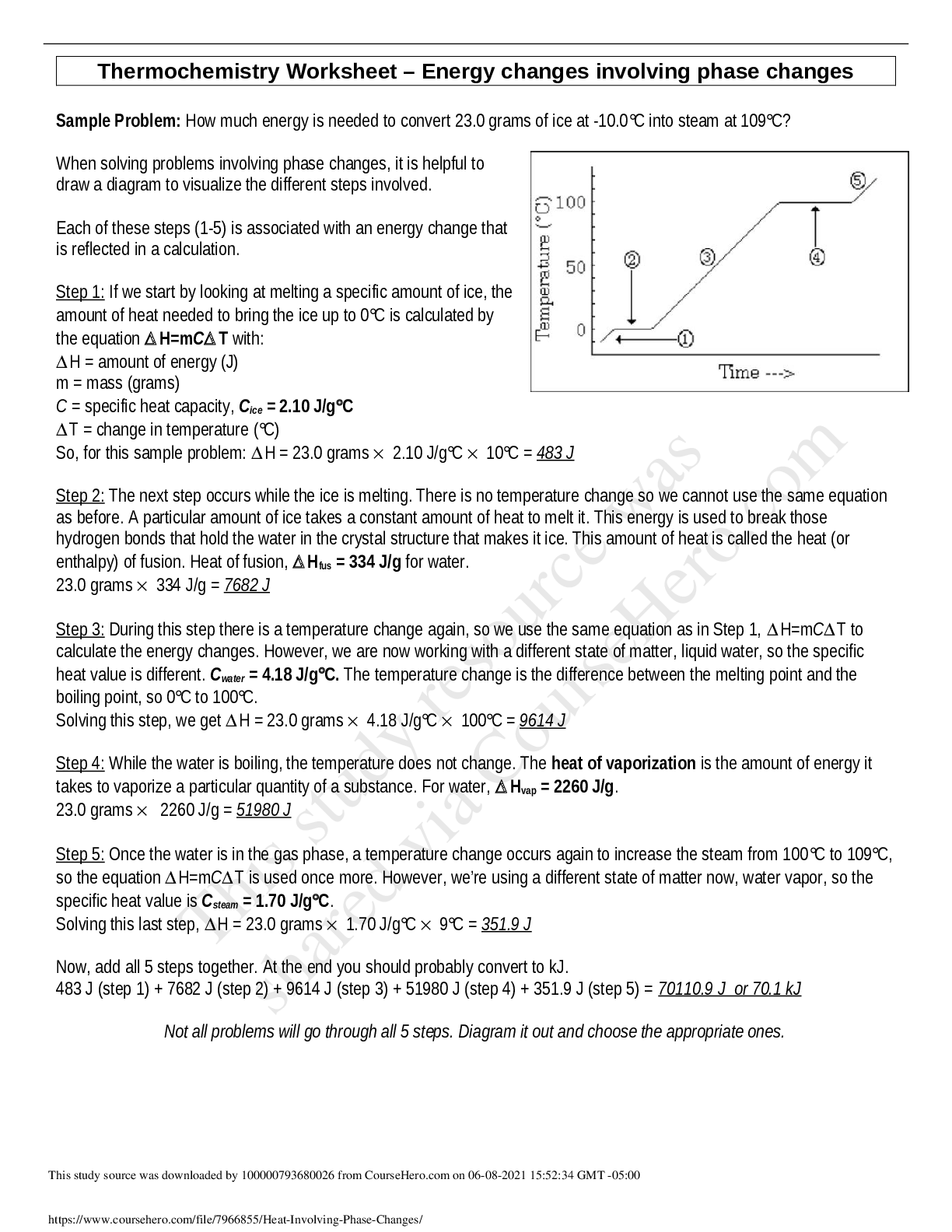



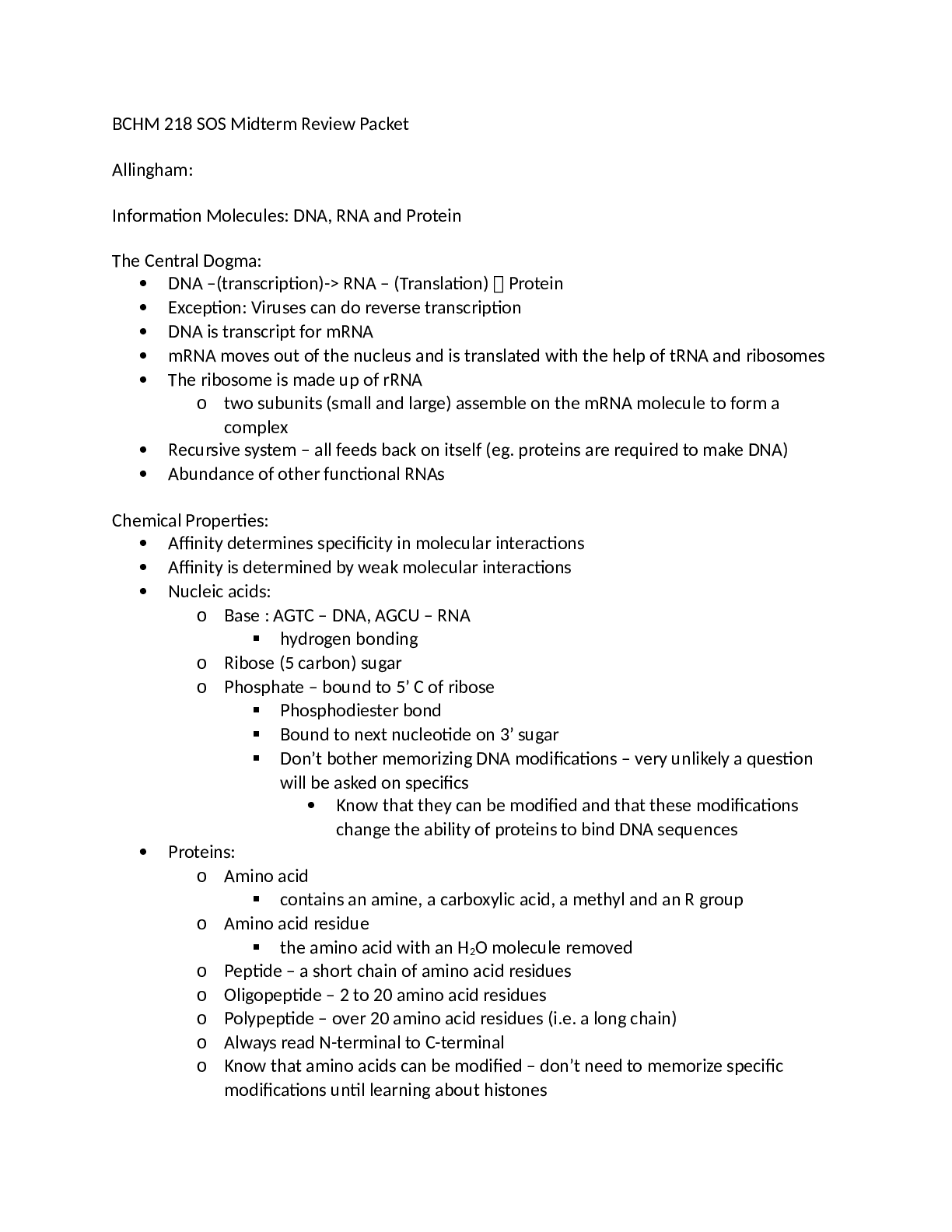
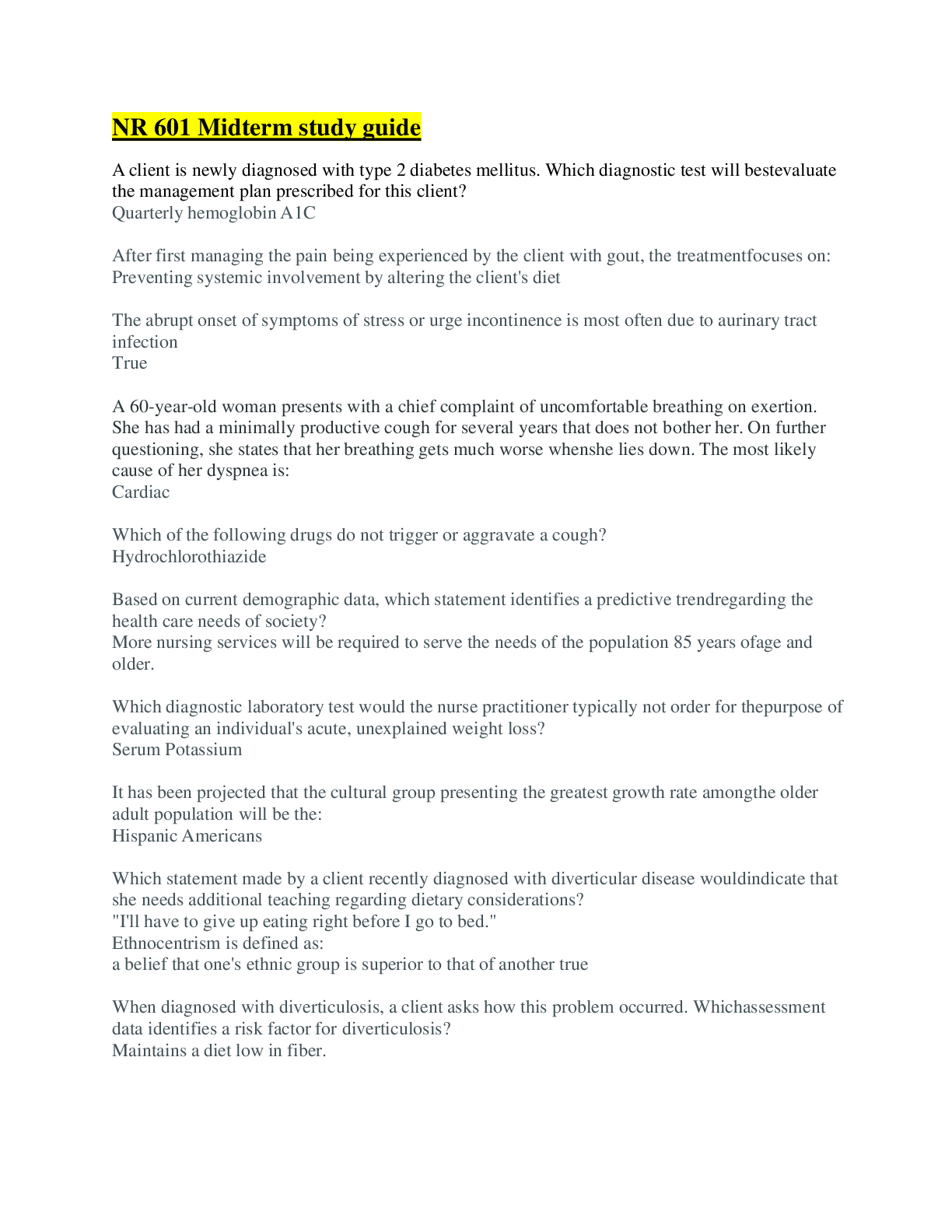
.png)
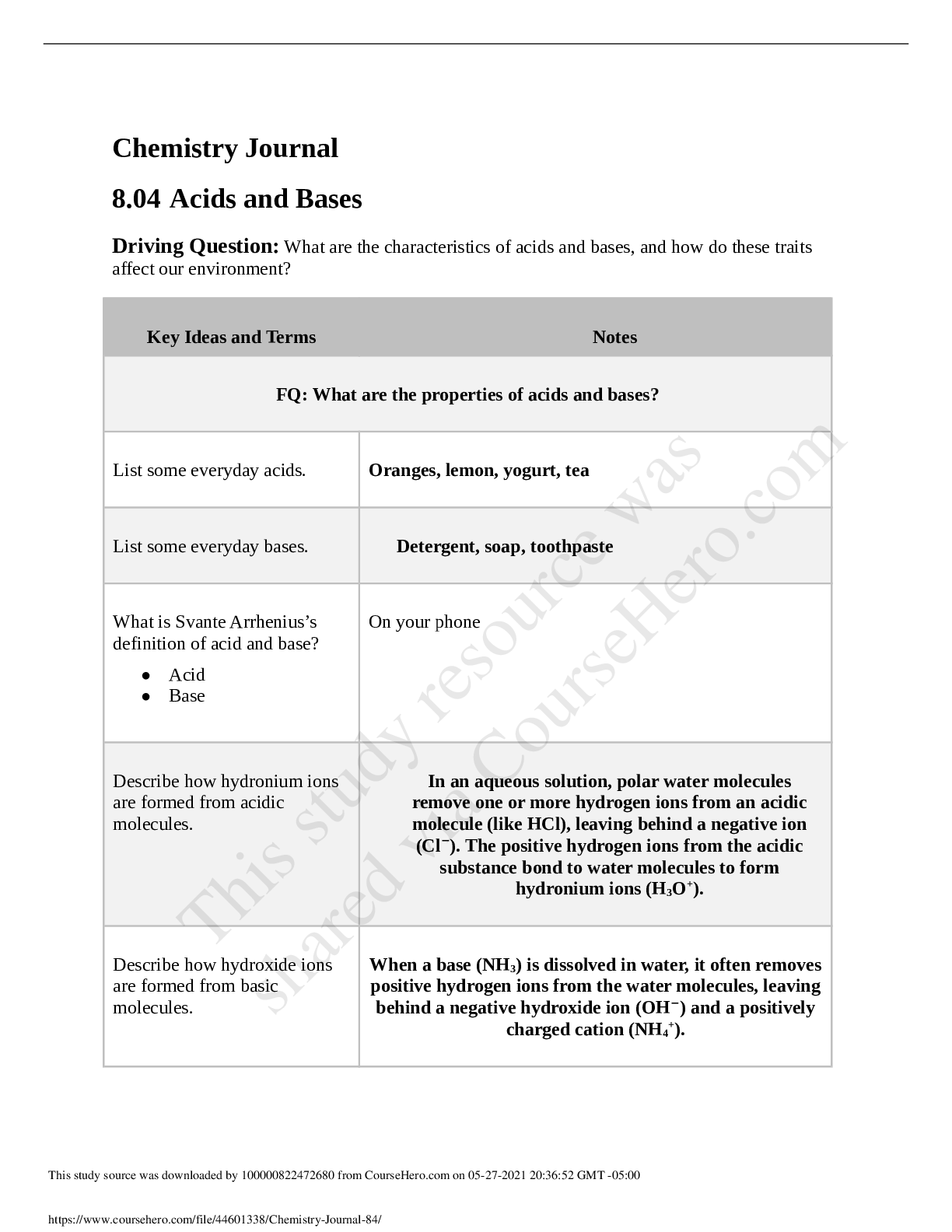
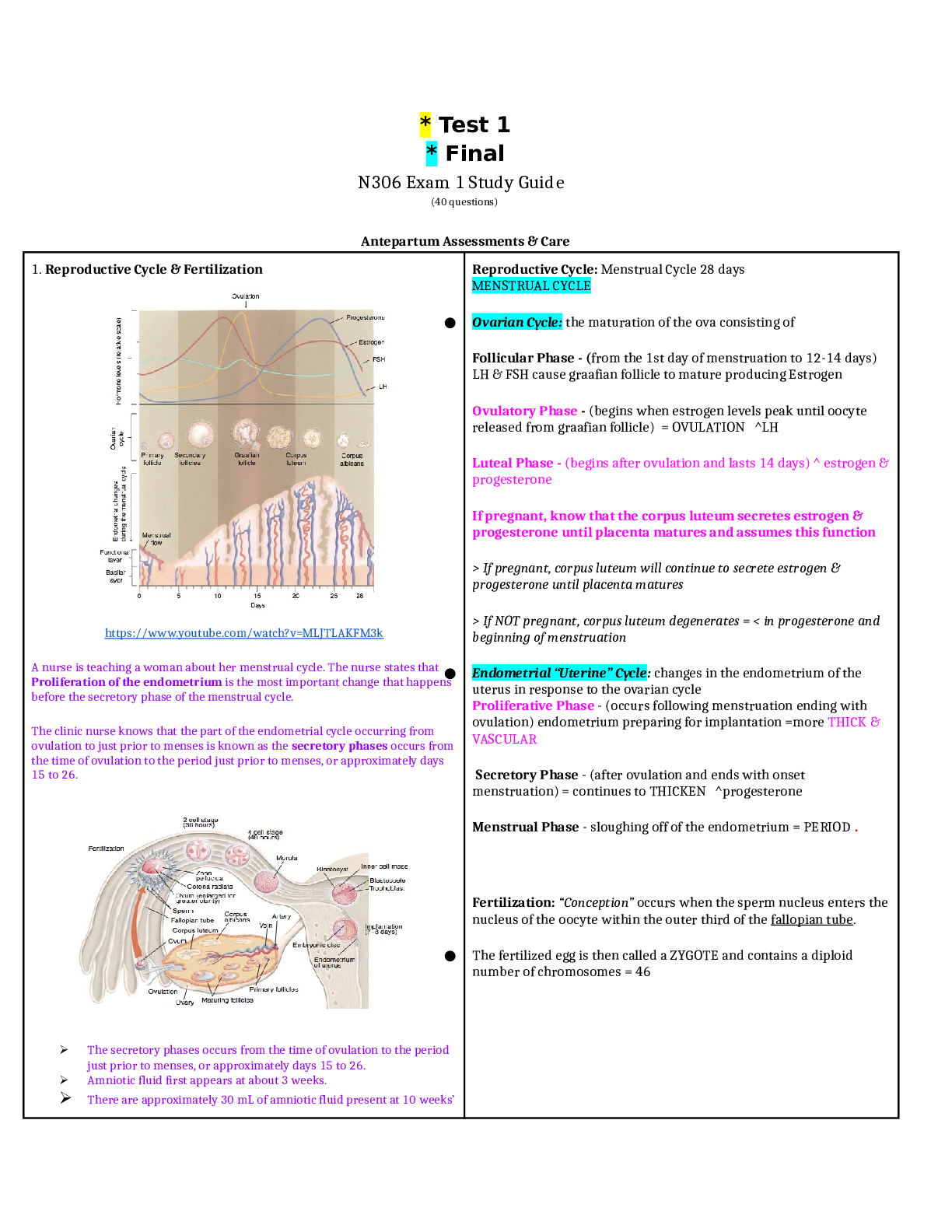

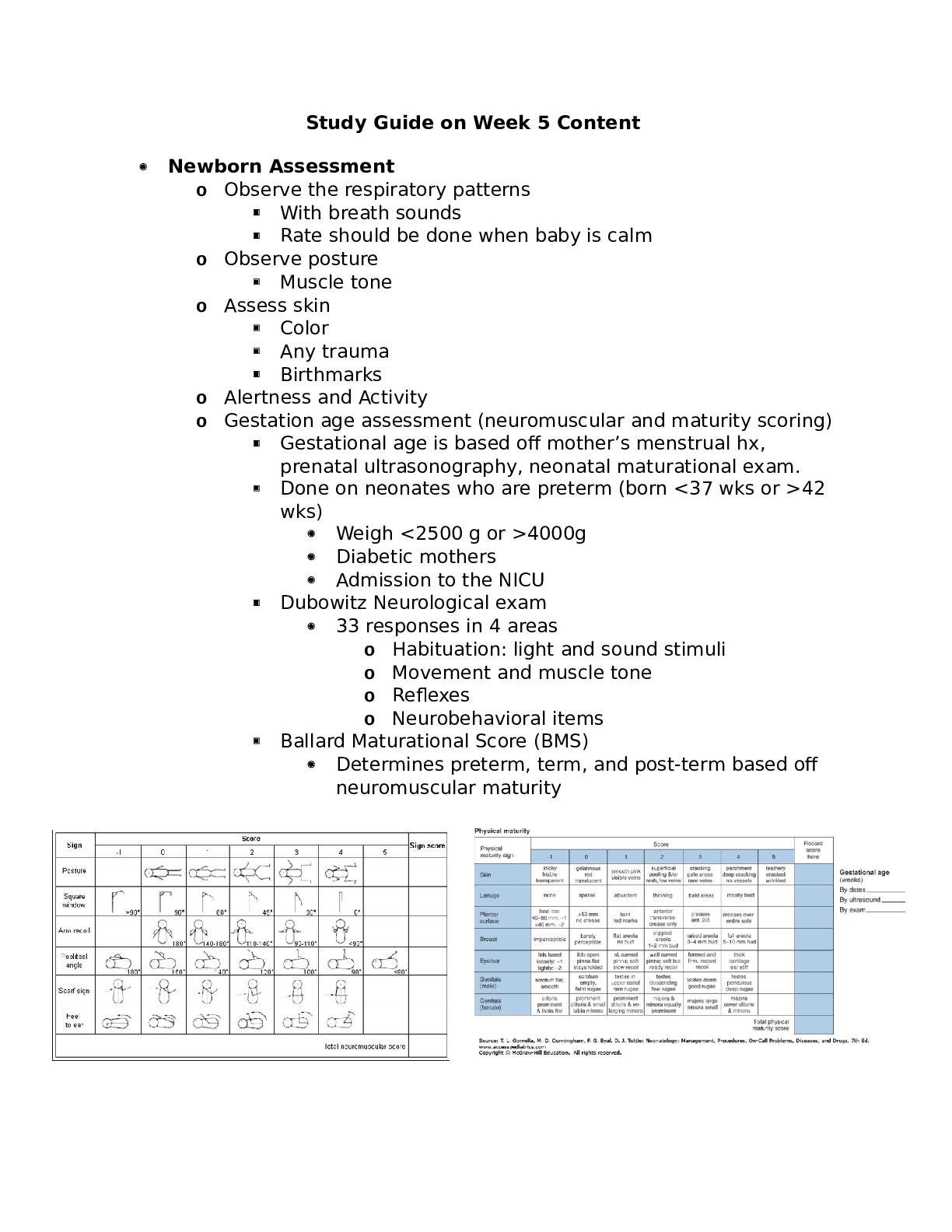

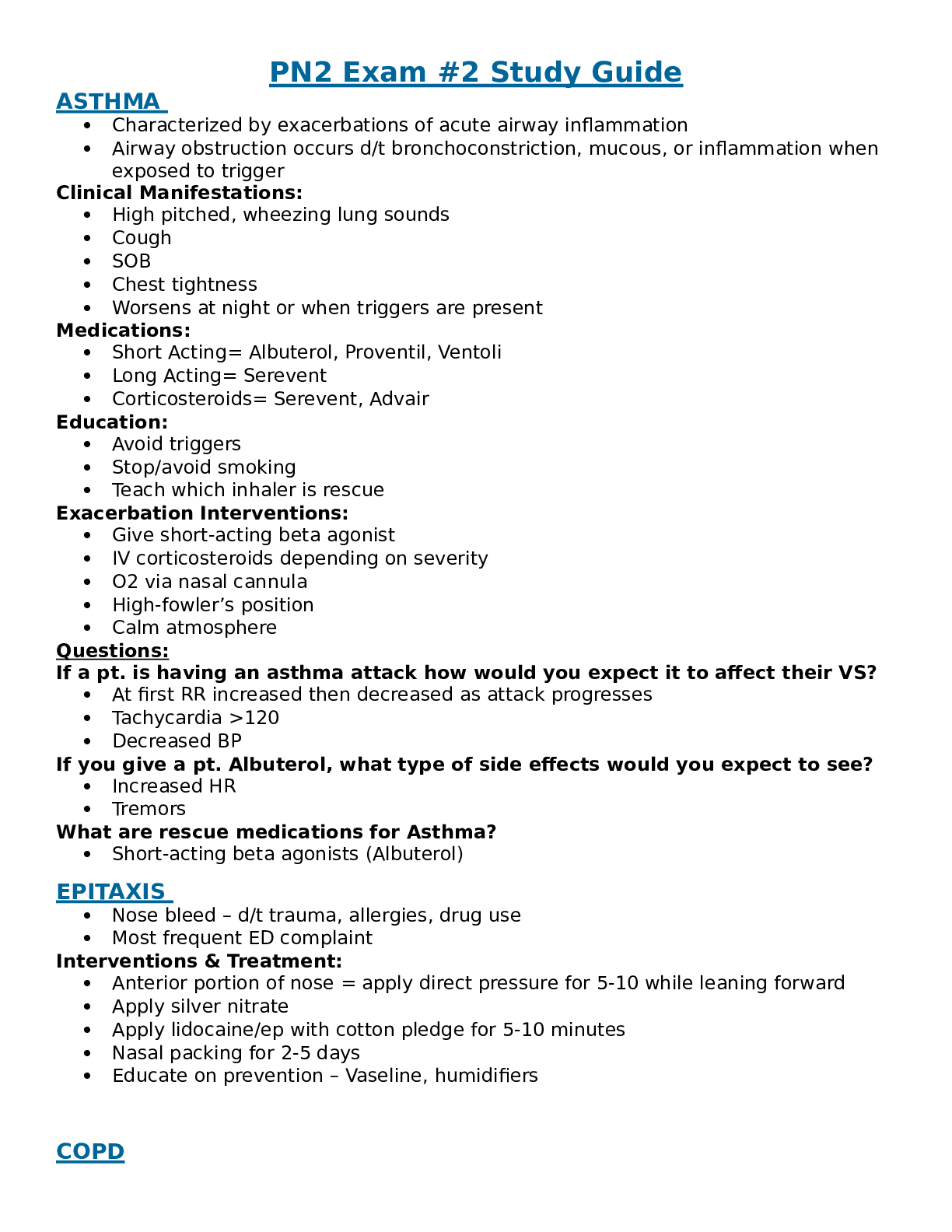
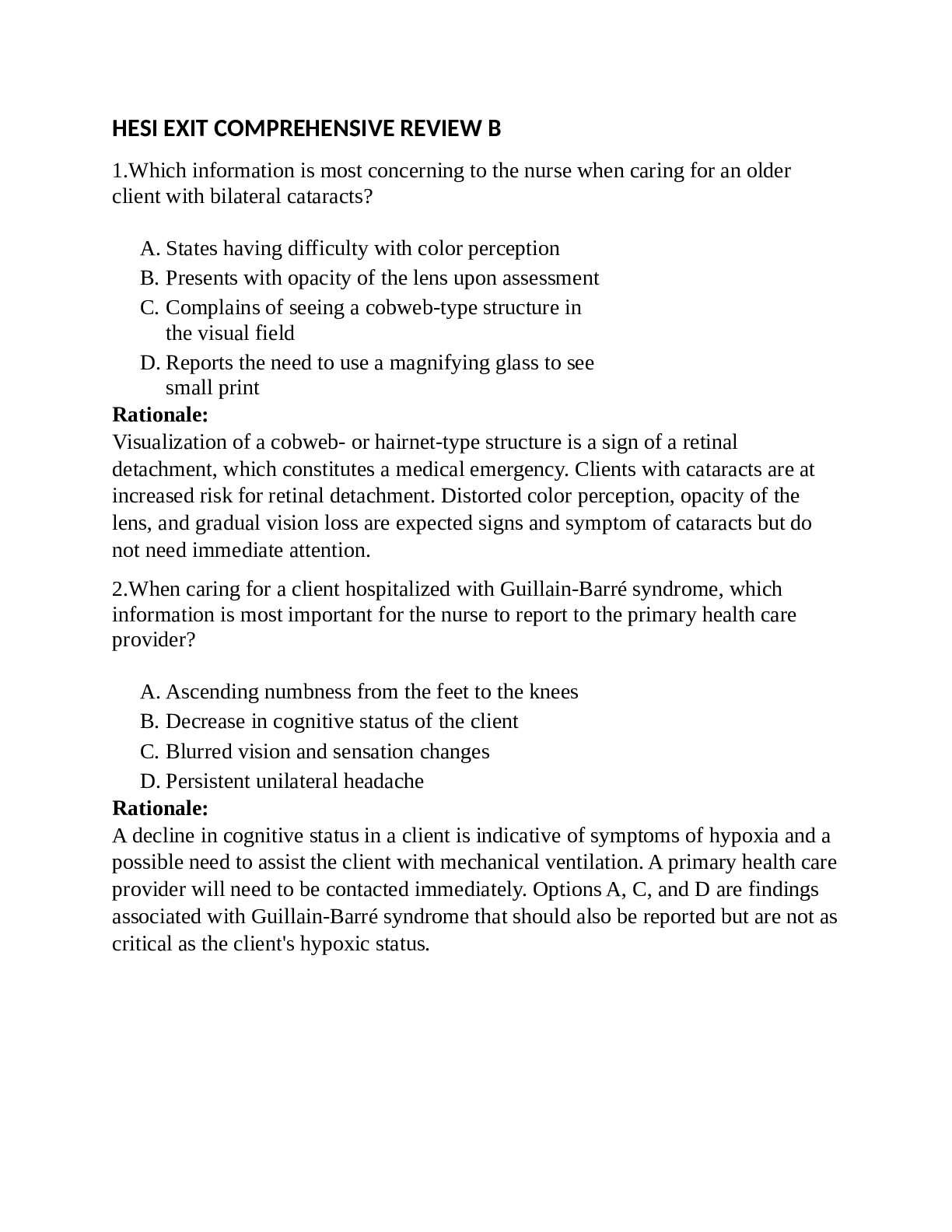
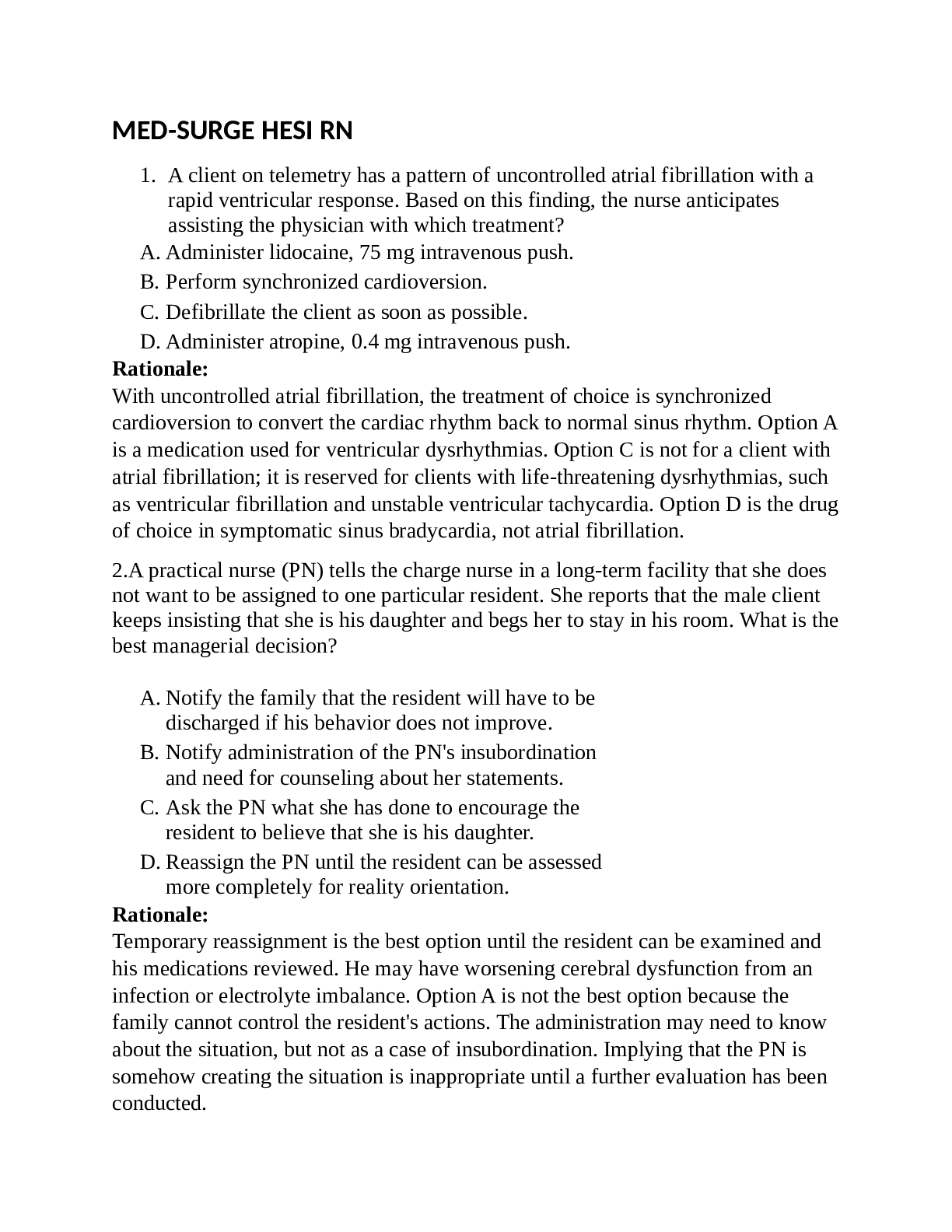


.png)
